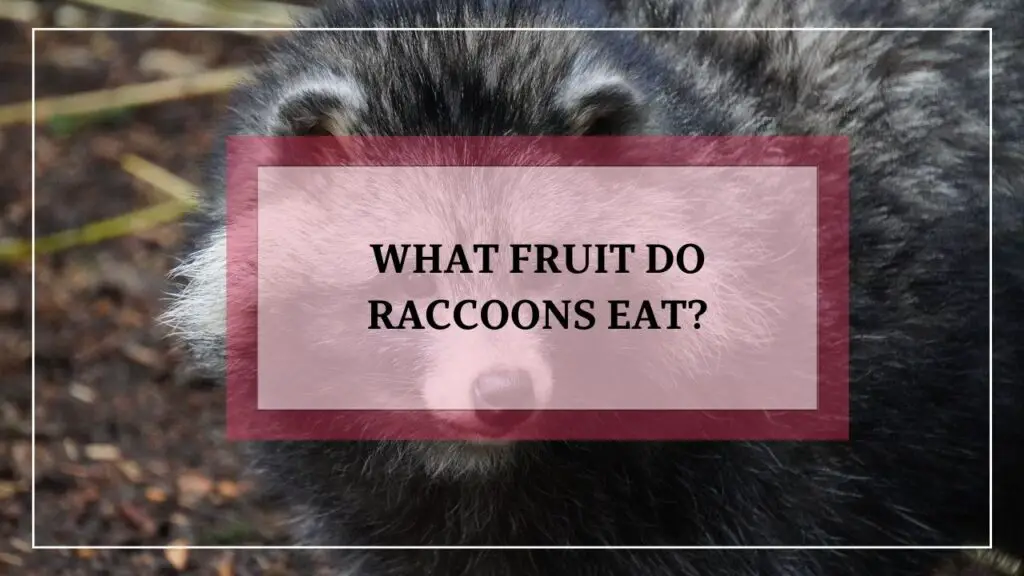Creating an outdoor dog area can be a fun way to give your pup plenty of space to roam, play, and explore. This dedicated space helps keep your dog safe while allowing them to get the exercise they need. Let’s take a look at how to set up the perfect spot for your canine companion!
Choosing the Right Ground Cover

When setting up an outdoor dog area, the choice of ground cover is key. In the image, you can see a mix of artificial grass and gravel. This combination offers both comfort and practicality for your pets.
Artificial grass provides a soft surface for dogs to play and rest on. It’s easy to clean and doesn’t get muddy, which is a big plus. On the other hand, gravel is durable and allows for good drainage. It helps keep the area dry, which is important for hygiene.
Think about your dog’s habits. If they love to dig or roll around, a softer surface like artificial grass might be ideal. For more active dogs, a gravel area can withstand rough play. Mixing both materials can provide the best of both worlds.
Maintenance is another factor. Artificial grass requires occasional cleaning, while gravel may need raking to keep it looking neat. Choose what fits your lifestyle and your dog’s needs.
Designing a Secure Fenced Space

Creating a safe outdoor area for dogs is essential for their happiness and well-being. The image shows a fenced space with a dog enjoying the open environment. This setup allows pets to roam freely without the worry of them escaping or encountering dangers.
When designing such a space, consider the height and material of the fence. A sturdy fence prevents dogs from jumping over or digging under. The grass in the area provides a comfortable surface for play and relaxation. Make sure to choose a durable material that can withstand the elements.
It’s also important to think about the layout. The space should be large enough for dogs to run and play. Adding features like shaded areas or toys can make the environment even more enjoyable. Regular maintenance of the area keeps it clean and safe for your furry friends.
Creating Shade and Shelter

When setting up an outdoor dog area, shade and shelter are key. The image shows a cozy dog house nestled under leafy trees, providing a perfect spot for your pup to escape the sun. Trees not only offer shade but also create a natural environment that dogs love.
The dog house itself is inviting and well-constructed, giving your furry friend a safe place to rest. It’s important to have a shelter that protects against rain and wind too. This setup ensures your dog can enjoy the outdoors comfortably, no matter the weather.
Adding some soft bedding inside the dog house can make it even more appealing. Dogs appreciate a comfy spot to curl up after a day of play. With the right shade and shelter, your outdoor dog area becomes a perfect retreat for your pet.
Incorporating Agility Equipment

Creating an outdoor dog area is a fantastic way to keep your pets active and engaged. One of the best additions to such a space is agility equipment. This equipment not only provides physical exercise but also mental stimulation for dogs.
In the image, you can see several dogs enjoying their time in an agility course. There are hurdles and tunnels set up, encouraging the dogs to jump and weave through the obstacles. This kind of play is great for building confidence and improving coordination.
Setting up agility equipment can be simple. You can start with basic items like cones, jumps, and tunnels. As your dogs get more comfortable, you can add more challenging obstacles. This keeps the play area fresh and exciting for them!
Remember, agility training is not just for competition. It’s a fun way for dogs to bond with their owners and socialize with other dogs. Watching them navigate the course brings joy and laughter to everyone involved.
Designing a Relaxation Zone

Creating a cozy outdoor dog area can be a delightful project. The image shows a well-designed space where dogs can relax and enjoy their time outside. Soft dog beds invite them to curl up and take a nap, while a shaded area keeps them cool during sunny days.
The wooden walls and decorative elements add a nice touch, making it feel warm and welcoming. Plants bring a bit of nature into the space, enhancing the overall vibe. A fan overhead ensures fresh air circulates, making it comfortable for both dogs and their humans.
Having a designated relaxation zone is key for your pets. It gives them a safe place to unwind, play, and enjoy the outdoors. Adding personal touches like blankets and toys can make the area even more inviting. This setup not only benefits the dogs but also creates a lovely spot for owners to spend time with their furry friends.
Water Features for Hydration

Water features are a fantastic addition to any outdoor dog area. They not only provide hydration but also create a fun environment for dogs to enjoy. In the image, we see a playful scene where a few dogs are gathered around a fountain. The water is splashing, and the dogs seem curious and excited.
This fountain serves as a perfect spot for dogs to quench their thirst. It’s designed to be both functional and entertaining. The gentle flow of water attracts dogs, encouraging them to drink more, especially on warm days.
Having a water feature like this fountain can help keep dogs cool and hydrated while they play. It’s important for their health, especially during outdoor activities. Plus, watching them interact with the water can be a joy for pet owners.
Incorporating such features into an outdoor dog area can enhance the overall experience for both dogs and their humans. It adds a lively element that makes the space more inviting and enjoyable.
Interactive Toys and Play Structures

In an outdoor dog area, interactive toys and play structures are essential for keeping our canine companions engaged and happy. The image shows a vibrant play area filled with colorful equipment designed for dogs to explore and enjoy.
There are slides, tunnels, and various shapes that encourage dogs to climb, jump, and run around. This setup not only provides physical exercise but also stimulates their minds. Dogs love to investigate different textures and spaces, making playtime exciting.
Having a variety of toys available is key. Some dogs might prefer to chase balls or tug on ropes, while others enjoy navigating through tunnels. This diversity helps cater to different personalities and play styles, ensuring every pup finds something fun to do.
Social interaction is another big benefit of these play structures. Dogs can play together, promoting healthy social skills and reducing anxiety. Watching them interact in a safe environment is a joy for any dog owner.
Safe Plants for Dog-Friendly Landscaping

Creating a dog-friendly outdoor area means choosing the right plants. You want your garden to be beautiful and safe for your pup. In the image, we see a lovely space filled with colorful flowers and greenery. The dog is exploring, which shows how important it is to have a safe environment for pets.
Some great options for dog-friendly landscaping include marigolds, sunflowers, and snapdragons. These plants not only add color but are also non-toxic to dogs. Keeping your furry friend safe while enjoying the outdoors is a top priority.
It’s also smart to avoid plants like azaleas and lilies, as they can be harmful. Always check if a plant is safe before adding it to your garden. With the right choices, your outdoor space can be a fun and secure playground for your dog.
Creating a Safe Entrance and Exit

When setting up an outdoor dog area, the entrance and exit are key spots to focus on. The image shows a well-designed gate that allows for easy access while keeping pets secure. This setup helps prevent any unexpected escapes, which is a big concern for pet owners.
The gate features a sturdy design, ensuring that it can withstand the excitement of dogs eager to explore. It’s essential to have a system that is both functional and safe. A double-gate system can be a great option, allowing you to control the flow of dogs entering and exiting the area.
Another important aspect is the surface leading up to the gate. The mats shown in the image provide a comfortable footing for dogs and help keep the area clean. Keeping the entrance tidy is vital for safety and hygiene.
Lastly, consider adding signage near the entrance. Clear instructions can help ensure that everyone knows how to use the gate properly. This promotes a smooth experience for both dogs and their owners.
Designing an Enrichment Area

Creating an outdoor dog area can be a fun project. This space should be inviting and stimulating for your pet. In the image, we see a cozy area filled with toys and activities that keep dogs engaged.
The layout features a mix of colorful toys, including balls and interactive play items. These elements encourage dogs to explore and play, promoting physical activity and mental stimulation. The soft flooring is gentle on their paws, making it a safe place for them to romp around.
Natural elements, like the hanging plants and surrounding trees, add a touch of nature. This helps create a calming environment where dogs can relax after playtime. The design also includes storage for toys, keeping the area tidy and organized.
Overall, this enrichment area is a fantastic way to ensure your dog has a space to enjoy the outdoors while staying active and happy.
Implementing a Waste Management System

Creating an outdoor dog area is a great way to let our pets enjoy the fresh air. However, keeping it clean is just as important. A waste management system is key to maintaining a pleasant environment for everyone.
The image shows a designated waste disposal area, complete with a trash can and clear signage. This setup encourages dog owners to clean up after their pets. Having a visible and accessible waste bin makes it easier for everyone to do their part.
It’s also helpful to provide bags for waste collection. This way, dog owners can grab a bag on the go. Making waste disposal easy and convenient helps keep the area clean and enjoyable for all visitors.
Regular maintenance of the waste management system is essential. Emptying the bins frequently prevents overflow and keeps the area looking tidy. A clean dog area is not only good for the dogs but also for their owners and the community.
Providing Fresh Water Stations

Keeping our dogs hydrated is super important, especially when they’re playing outdoors. The image shows a well-designed water station in a dog park, where several dogs are happily drinking fresh water. These stations are a great addition to any outdoor dog area.
Having multiple water sources helps ensure that every dog can easily quench their thirst. The setup in the image allows dogs to drink comfortably, with water flowing continuously. This not only keeps them hydrated but also encourages them to drink more often.
It’s essential to have clean, fresh water available at all times. Dogs can get hot and tired after running around, so providing easy access to water helps keep them cool and healthy. Plus, it’s a great way to bring dogs together as they take turns at the water station.
Overall, fresh water stations are a must-have feature in any outdoor dog area. They promote hydration, health, and social interaction among our furry friends.
Installing Lighting for Evening Use

Creating a cozy outdoor dog area is not just about the space; it’s also about how you light it up for evening use. The image shows a lovely setup with string lights illuminating the area, making it inviting for both dogs and their owners.
When the sun sets, having proper lighting allows your furry friends to roam freely without any worries. The warm glow from the lights can create a friendly atmosphere, perfect for evening playtime or relaxation.
Consider using string lights like those in the image. They are easy to install and add a charming touch. You can hang them along fences or above the play area to brighten up the space. Solar-powered options are great for saving energy and are easy to maintain.
Don’t forget about safety! Ensure that the lights are pet-friendly and securely installed to avoid any accidents. A well-lit area not only enhances the fun but also keeps everyone safe during those evening hours.
Planning for Seasonal Changes

When creating an outdoor dog area, it’s key to think about how the seasons will affect the space. The image shows a winter scene, with snow covering the ground. This highlights the need for planning for colder months.
In winter, it’s essential to ensure that the area remains safe and accessible for dogs. Regular snow removal is important to keep paths clear. Consider adding heated shelters or windbreaks to protect pups from harsh weather.
As spring arrives, the focus shifts to drainage. Melting snow can create muddy spots, so good drainage systems are vital. Adding gravel or grass can help manage water flow and keep the area dry.
Summer brings its own challenges. Providing shade, like the covered area in the image, is crucial to keep dogs cool. Fresh water stations are also a must to keep them hydrated during playtime.
Finally, autumn is a great time for maintenance. Leaves can pile up, so regular cleaning helps keep the area tidy. It’s also a good time to inspect fences and equipment for any needed repairs before winter sets in.
Creating a Training Space

Setting up an outdoor dog area can be a game changer for training your pup. The image shows a spacious area with bright orange cones set up for agility training. This setup is perfect for teaching your dog to navigate obstacles, which helps improve their focus and coordination.
The green turf provides a soft surface for your dog to run and play. It’s easy on their paws and makes for a comfortable training environment. The fencing around the area ensures safety, allowing your dog to explore without the worry of wandering off.
Incorporating different training tools, like the cones seen in the image, can make sessions more engaging. You can set up various courses to keep things interesting. This not only helps with physical exercise but also stimulates their mind, making training a fun experience.
Remember to keep sessions short and positive. Celebrate small victories to keep your dog motivated. With a dedicated space like this, training becomes a delightful part of your dog’s routine.
Ensuring Proper Drainage Solutions

When creating an outdoor dog area, proper drainage is key. The image shows a well-designed drainage system that channels water away from the play area. This setup helps keep the ground dry and safe for dogs to run and play.
Notice how the water flows smoothly through the channels. This design prevents puddles from forming, which can be a breeding ground for bacteria and pests. A dry area is not only more enjoyable for dogs but also easier for owners to maintain.
Using natural materials like sand and gravel can enhance drainage. The layout in the image shows how these materials can be shaped to direct water effectively. It’s a simple yet effective solution that benefits everyone involved.
Regular maintenance is also important. Clearing leaves and debris from the drainage channels will keep them functioning well. This ensures that your outdoor dog area remains a fun and safe space for your pets.

Hi, I’m Ali Tarek, the founder of Animalsman. I’ve always been passionate about pets, especially dogs and cats, and I created this website to share practical tips, easy recipes, and helpful care advice for fellow pet lovers. My goal is to make pet care simple, enjoyable, and accessible for everyone. When I’m not writing or curating content, you’ll usually find me spending time with my furry friends or learning new ways to keep them happy and healthy.


